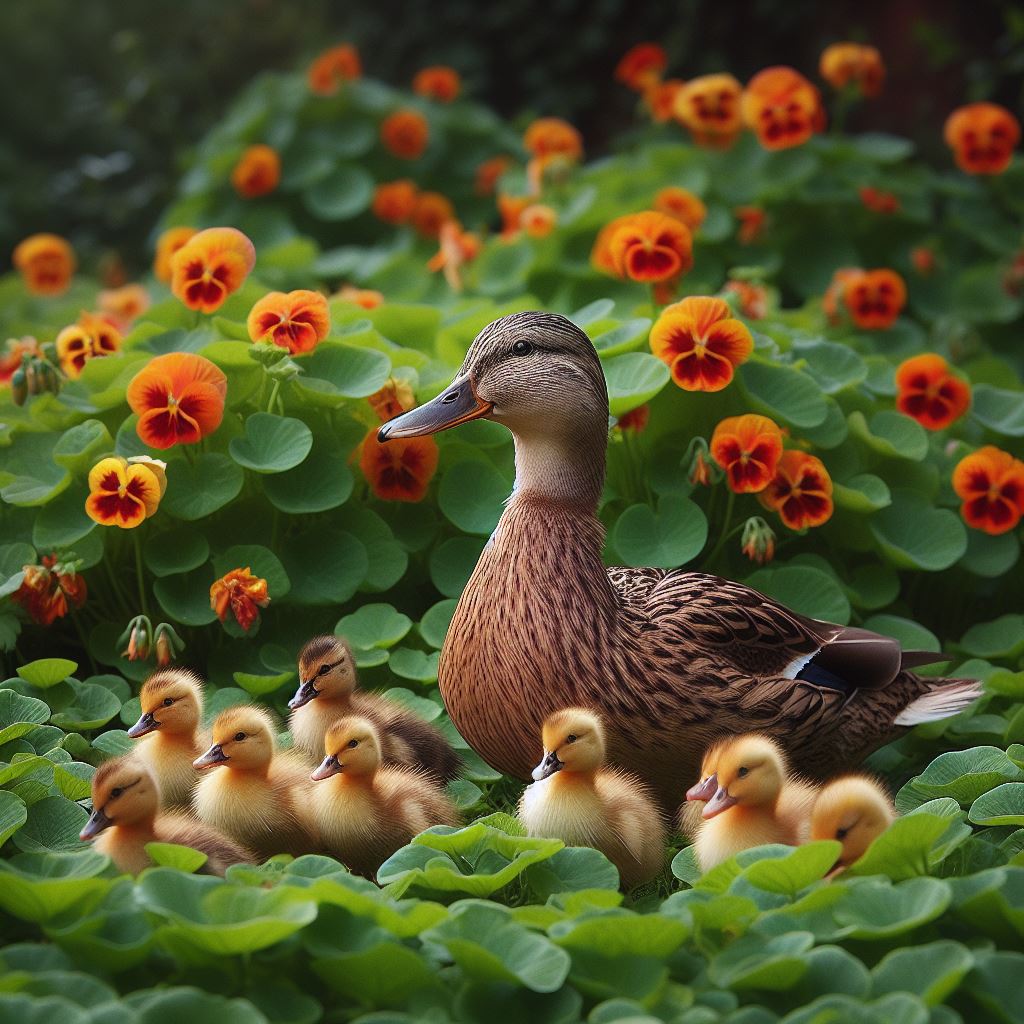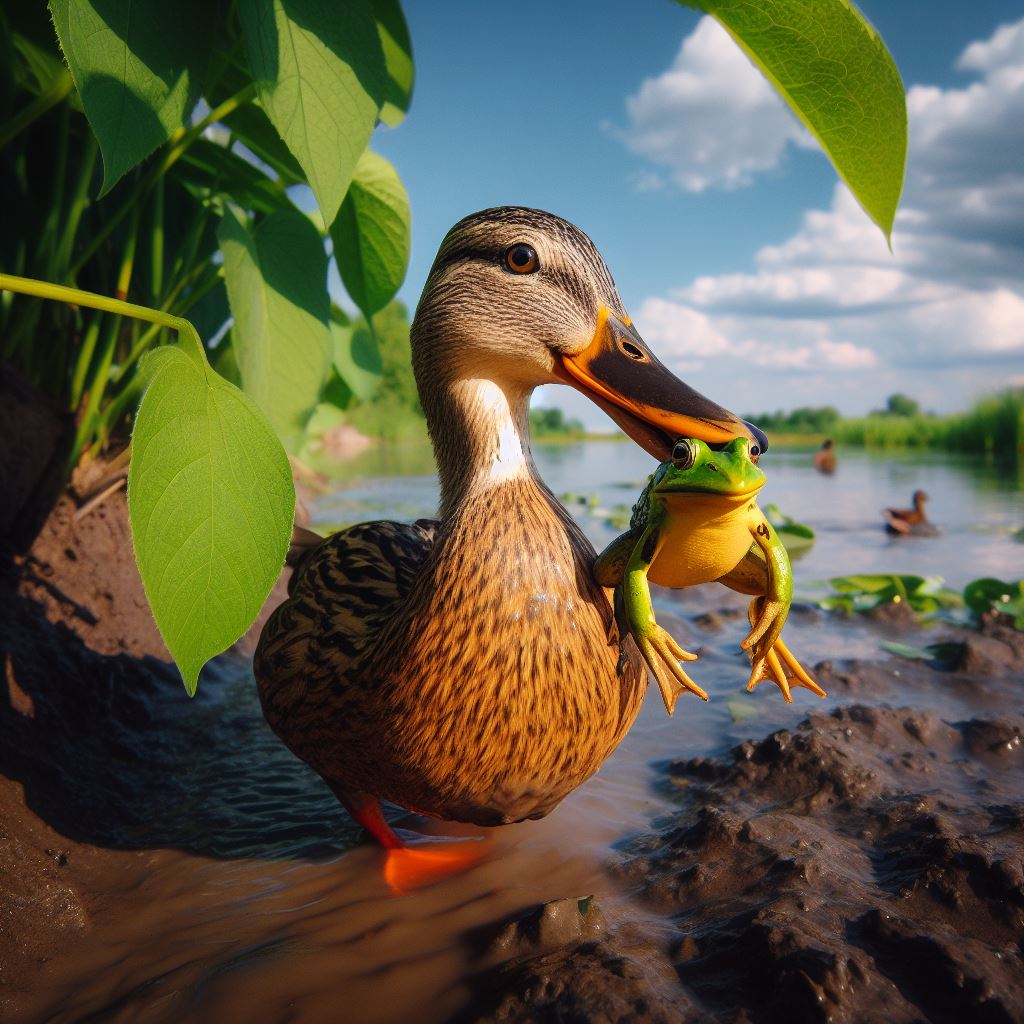Why Do Ducks Swim In Circles? Learn the Fascinating Reason!

Table of content:
- How Many Circles Do Ducks Typically Swim In?
- What Causes Ducks to Swim in Repetitive Circles?
- Do Only Certain Breeds of Ducks Swim in Circles?
- Is Circular Swimming Common in Other Waterfowl Like Geese?
- When Do Ducklings Start Exhibiting Circular Swimming Behavior?
- Are Circular Swimming Patterns Connected to Migration in Ducks?
- Can Something Be Wrong if a Duck is Compulsively Swimming in Tight Circles?
- Conclusion
Seeing a duck serenely paddling along in a pond, you may notice it start to swim in repetitive loops. These circular laps often go on for extended periods, with the duck paddling round and round in a loop pattern. This behavior isn’t just a random quirk – it actually serves several purposes for a duck. Understanding why ducks swim in circles gives insight into their natural behaviors and instincts.
First we’ll look at how many circles ducks will typically swim in during these looping sessions. Next we’ll explore the potential causes behind circular swimming such as foraging, preening, and migration instincts. We’ll also learn if certain duck species or breeds exhibit more circular paddling than others. Finally, we’ll discuss if this circular pattern shows up in related waterfowl like geese and if it’s cause for concern when seen in excess.
How Many Circles Do Ducks Typically Swim In?
When a duck starts a looping circuit around a pond or lake, they may swim in that pattern for an extended time, paddling in circle after circle. But just how many laps might a duck swim in one of these circling sessions?
On average, a duck will paddle in approximately 10 to 15 circles when engaged in repetitive circular swimming. However, some individuals may swim as many as 30 laps or more before stopping. Dabbling duck species in particular are prone to longer circling swims of 20 or more loops.
The number of consecutive circles a duck will swim depends on the purpose behind the behavior. For instance, a duck looking for food may swim in more circles to forage a greater area than one just bathing or preening itself. Certain circumstances like breeding season can also intensify the circular pattern and result in more laps.
So while 10 to 15 circles is typical, it’s not unusual to see a duck diligently paddling in dozens of repetitive loops if the purpose warrants a longer circling session. Understanding why they circle helps explain how many laps ducks are likely to complete.
What Causes Ducks to Swim in Repetitive Circles?
Ducks have several key reasons why they engage in repetitive circular swimming patterns. These include:
- Foraging for food
- Preening feathers
- Courtship and mating behaviors
- Migration instincts
- Territoriality
- Predator inspection
By swimming in concentric circles, ducks are able to thoroughly search an area for food and potential threats while staying safely in one locality. The circular motion also aids preening, allows courting displays, and fulfills migration tendencies.
Foraging
Foraging for food is one of the top reasons ducks will circle a pond or lake. By methodically paddling in loops, ducks are able to scan the water and underlying mud for tasty morsels.
Their wide field of vision allows ducks to search for aquatic plants, fish, insects, and invertebrates as they circle an area. If the duck discovers a bountiful food source, they will pause their looping pattern to feed before resuming their circular paddling.
This foraging behavior is particularly noticeable in dabbling duck species that upend to search underwater as they circle. But diving ducks also patrol in circular loops as they seek out fish and other aquatic fare.
Preening
Another reason ducks swim in repetitive circles is to aid preening their feathers. As they paddle in a circuit, ducks will twist their neck to nibble and straighten their back feathers with their bill. The circular motion allows them to prune multiple feather groups as they rotate.
Ducks that are molting old feathers are especially likely to spend time preening in circular patterns. The loops let them tweak and align new plumage while covering all their feather zones from head to tail.
Courtship & Mating
Circular swimming takes on special significance during the breeding season. Drakes will swim in exaggerated circles around a female duck as a courtship display, using the loops to showcase themselves from all angles.
If receptive, the female duck may also begin steadily circling the drake in a synchronized manner. Pairs often continue this circular courting dance until mating occurs.
These mating circles are distinctive with both ducks typically paddling wing to wing in perfect coordination. This circular formation strengthens pair bonding up to egg laying.
Migration Instincts
Swimming in repetitive circles is thought to assist ducks in honing their magnetic compass abilities for migration. As they methodically circle, ducks are able to imprint directional cues that help guide their seasonal journeys.
These endless loops fine tune a duck’s inborn magnetic senses so critical for navigating over vast distances during migration. Scientists believe the circular movement specifically helps ducks distinguish subtle magnetic shifts for orientation.
Territoriality
Male ducks are also known to patrol their territory in circular patterns during breeding season. This allows drakes to survey the full area and chase off competing males intruding on their domain.
By habitually circling, drakes reinforce the boundaries while closely monitoring activity. If an interloper approaches, they swiftly give chase while still keeping their territory in sight.
Predator Inspection
Ducks will cautiously swim in wide circles to inspect any potential threat like predators. By carefully looping around the hazard from a safe distance, ducks are able to gather information and react appropriately.
This circling behavior allows ducks to carefully examine any disturbances for possible danger. If needed, they will sound alarm calls or rapidly flee once they complete their inspection.
Do Only Certain Breeds of Ducks Swim in Circles?
While all ducks are capable of circular swimming, some breeds exhibit this behavior more frequently. In particular, dabbling ducks are most strongly associated with repetitive circular paddling.
Species like mallards, wood ducks, teals, widgeons, pintails, and shovelers are all known for their circling habits as they forage and migrate.
The trait is also pronounced in perching ducks like the wood duck which roosts in trees at night. Since they reside on smaller wooded ponds, these ducks habitually swim laps to effectively scour their limited aquatic habitat.
In contrast, sea ducks found along coastlines are less likely to swim in repetitive circles. With their ocean resources more broadly dispersed, circling a concentrated area brings fewer rewards.
However, most duck breeds will circle to some degree based on their needs. So while dabbling ducks may circle most persistently, it’s an adaptive behavior seen across duck species.
Is Circular Swimming Common in Other Waterfowl Like Geese?
Ducks aren’t the only waterfowl to circle waterways. Swans and geese also exhibit circular swimming patterns for many of the same reasons.
Geese frequently paddle in loops to forage vegetation along a pond’s perimeter. Their clear vision lets them efficiently graze around a habitat while protecting goslings.
Much like ducks, geese also circle prospective mates and patrol territory by swimming in concentrated loops during breeding season. And both geese and swans will circle suspicious objects or threats to safely inspect them from all angles.
However, the extreme dabbling behavior of ducks makes their circling patterns most prolific. Since geese and swans don’t upend and dive, their need to methodically circle a pond when foraging is less urgent.
So while geese, swans, and other water birds do swim in circles, ducks have refined this technique to an art form. Their frequent dabbling and diving in search of food rewards repetitive circling as an efficient foraging strategy.
When Do Ducklings Start Exhibiting Circular Swimming Behavior?
Ducklings begin swimming and foraging almost immediately after hatching. But it takes time for ducklings to develop the coordinated paddling and balance needed to swim in sustained circular patterns.
Around 2 weeks is when ducklings start attempting basic circles and loops. But their initial efforts are often shaky and disjointed.
It’s usually not until 4 weeks of age that ducklings can master more prolonged, uniform circular swimming. Their juvenile feathers are in, and leg and foot strength is improved.
From 4 weeks onward, ducklings become quite adept at swimming in persistent, evenly-paced circles to forage. This circling ability lets young ducks feed independently while protecting themselves from threats.
Some ducklings may start grasping basic circling as early as 3 weeks if needed to keep up with foraging adults. However, 4 weeks old is the average age when the behavior becomes deliberate rather than accidental.
Are Circular Swimming Patterns Connected to Migration in Ducks?
Scientists believe a duck’s tendency to swim in repetitive circles is intrinsically linked to its migratory instincts. The circular movement helps imprint navigation cues ducks rely on when migrating vast distances.
As ducks methodically circle, they are able to detect subtle shifts in the magnetic field around them. These magnetic fluctuations provide key information for calibrating their internal compass.
The homing abilities of migratory ducks are exceptionally precise. Researchers think habitual circling amplifies a duck’s magnetic sensing and orientation skills essential for migration.
Interestingly, ducks that don’t migrate lack the strong circling impulse. Non-migratory ducks like the Muscovy swim in sporadic, wandering loops rather than fixed, repetitive circles.
The contrast suggests persistent circular paddling evolved in migrating ducks specifically to prime their innate navigation abilities for lengthy seasonal journeys.
Can Something Be Wrong if a Duck is Compulsively Swimming in Tight Circles?
While most circular swimming is perfectly normal, obsessive looping can potentially signal a health issue in ducks. Fixating on tight circles may indicate problems like:
- Vestibular disease – inner ear infection impacting balance
- Neurotoxic poisoning – from lead, pesticides, or other toxins
- Vision deficits – cataracts, blocked tear ducts, or other impairment
- Predator intimidation – duck is afraid to stop circling
- Captivity stress – unnatural conditions causing repetitive motions
Vestibular disease is one of the more common diagnoses if a duck can’t seem to stop spinning in lopsided circles. But toxins, impaired vision, stress, and fear can also trigger obsessive looping.
Pet ducks may especially compulsively circle their small enclosure if under-stimulated or anxious. With no migration to prep for, endless paddling often signals boredom in captive ducks.
If a duck is fixated on tight, non-stop circles, it’s best to remove them from the water to rest and seek vet advice. With treatment, ducks usually recover quickly from conditions causing excessive circling. Getting to the root cause is key to breaking repetitive looping.
Conclusion
When you notice a duck peacefully paddling in lap after lap, it’s fulfilling natural instincts and needs. Their circular swimming patterns serve critical functions like foraging, preening, navigating, and defending territory.
Certain breeds like dabblers are prone to more resolute circling thanks to their constant need to probe underwater. But most ducks will instinctively circle based on food availability, mating, migration, and security needs.
So next time you see a duck swimming round and round, remember they are simply going about the business of being a duck. Their efficient circular movement allows ducks to thrive in habitats around the world.
Welcome. I’m Adreena Shanum, the proud owner of this website, and I am incredibly passionate about animals, especially poultry. I founded adreenapets.com as a labor of love, stemming from my desire to share my knowledge and experiences with poultry enthusiasts worldwide.




